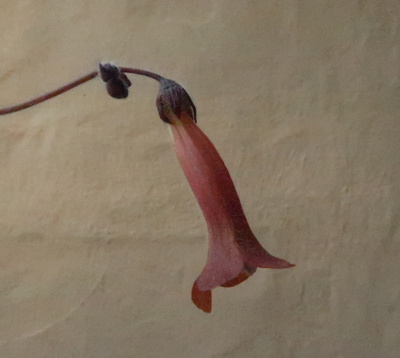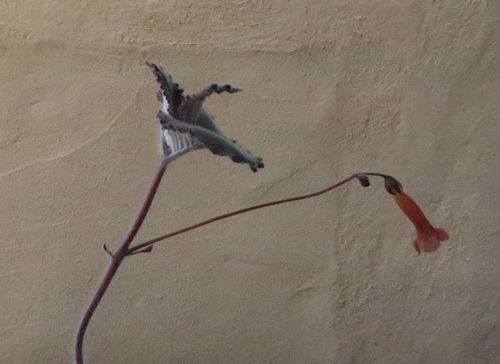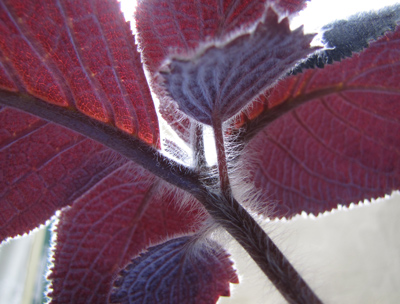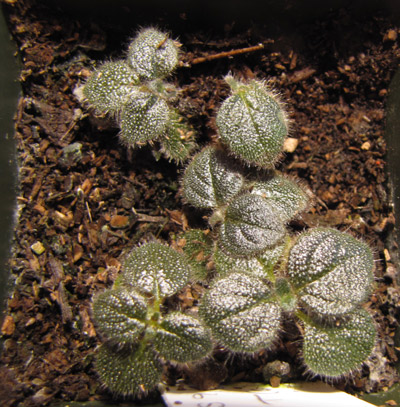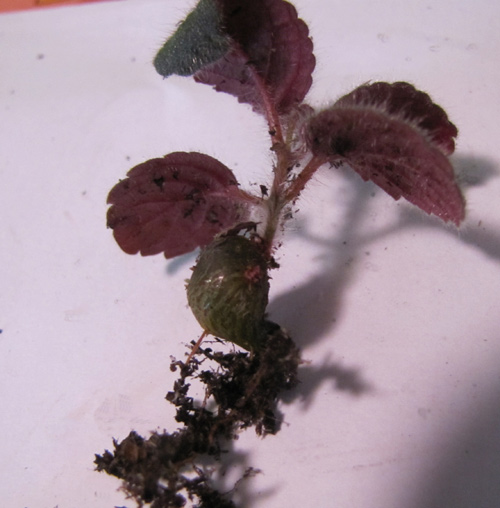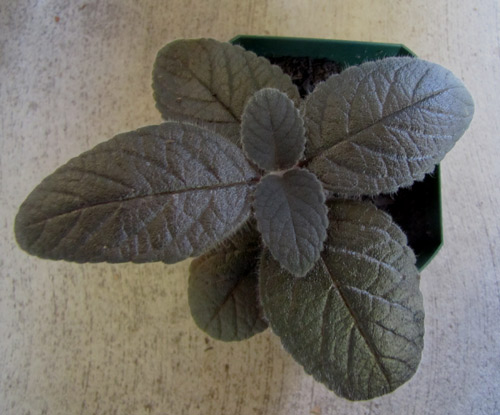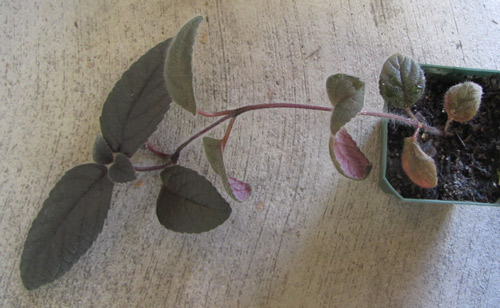Sinningia flammea
This species was known under the holding name of S. sp. "Itaguassu". The flower color is unusual. It is not an easy plant for most people.
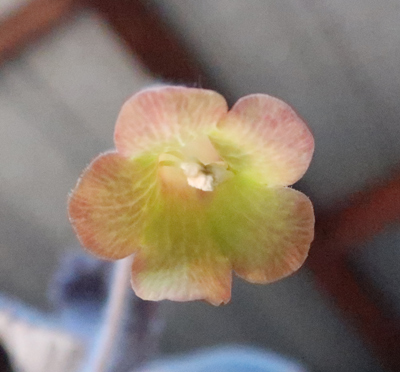
This species, published in 2019, was collected in the eastern part of Espírito Santo state of Brazil, where it was found growing on inselbergs above 700 m [about 2300 feet] altitude near the municipality of Itaguaçu.
This new species is believed to be closely related to S. aghensis on several grounds, the most striking one being the tall peduncles (flowerstalks).
